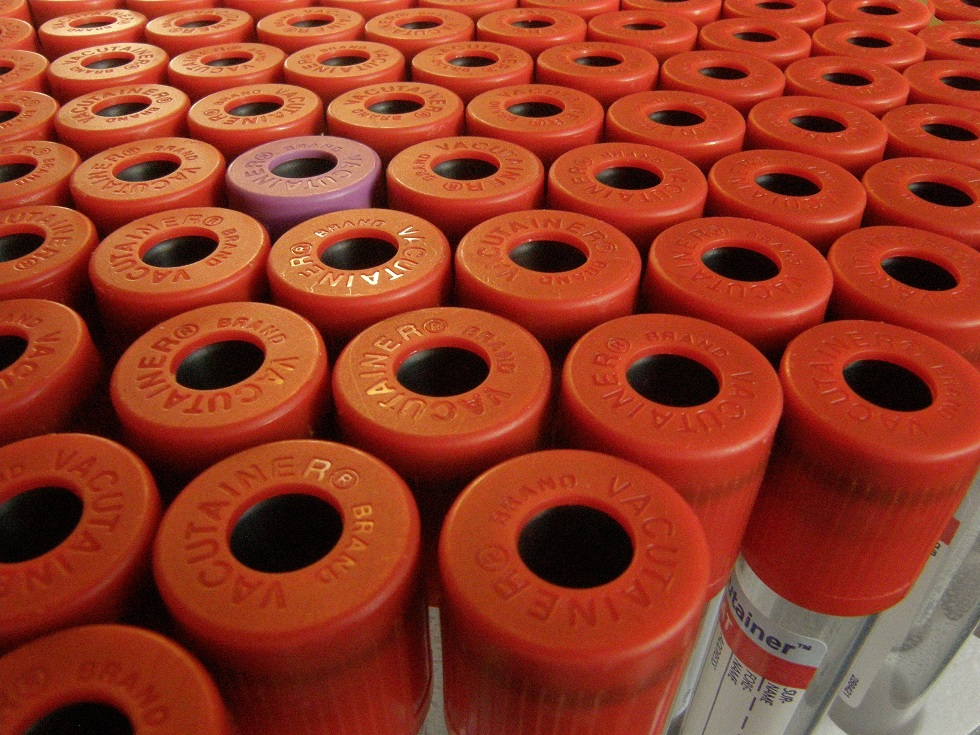Hyperthyroidism is the most common endocrinopathy of cats but is a rare disease in dogs. Most canine thyroid tumours are non-functional and the dogs are euthyroid or hypothyroid but occasional cases have been reported where the neoplastic cells are producing functional hormone. The presenting signs and the diagnostic tests are the same in both species.
Tests available include:
• Total-T4
• Free-T4
Total-T4
This is a measure of all T4 in the circulation and includes protein-bound and Free-T4 (FT4). Total-T4 (TT4) is generally recognised as the standard screening test used for determining baseline thyroid status in dogs and cats. As with all endocrine disease, diagnosis is can be complicated by concurrent disease and use of medications, including certain antibiotics, corticosteroids and anticonvulsants. As TT4 predominantly measures protein-bound thyroid hormone, it may be affected by conditions that impact on the patient’s serum proteins. Thus, interpretation of results should always take clinical history into account and may be aided by combining TT4 with FT4. Awanui Veterinary Pathology offers an automated enzyme immunoassay for testing TT4.
Free-T4
Free-T4 (FT4) is a measure of metabolically active, unbound thyroid hormone and makes up approximately 1% of the circulating thyroid hormone concentration. FT4 is that portion of the thyroid hormone that enters into cells to perform metabolic functions and exerts a negative feedback on pituitary production of TSH. Currently FT4 in dogs and cats is measured at Awanui Veterinary using a modified equilibrium dialysis method. This entails a preliminary dialysis stage followed by FT4 determination by RIA.
Although FT4 by equilibrium dialysis is less affected by non-thyroidal illness and autoantibodies than TT4, it does have limitations, including: it is expensive and labour intensive to perform. Additionally the specificity for the diagnosis of hyperthyroidism is slightly lower than TT4 meaning that false positives can occur in cats without hyperthyroidism. For these reasons FT4 by equilibrium dialysis is not commonly used as an initial screening test for thyroid disease, but rather is best used in those patients whose TT4 results appear not to be in keeping with their clinical symptoms and where there is a suspicion that the TT4 concentration is being affected by autoantibodies or concurrent non-thyroidal illness or drug therapy
Hyperthyroidism in cats
Most hyperthyroid cats have TT4 concentrations significantly greater than the reference range. Confirming the diagnosis is easy in these cases. However, in a few cases a single TT4 concentration may be only mildly increased or is at the high end of the reference range. This can occur if there is variable production by the gland or if there is concurrent non-thyroidal illness, which may be lowering the TT4 concentration. In these cases, another serum sample should be taken in two to four weeks’ time. If the result is still equivocal, measurement of FT4 is recommended.
Therapeutic monitoring of hyperthyroid cats
Adverse reactions are uncommon with anti-thyroid drugs but can occur. It is recommended that a CBC, serum chemistry, TT4 and urinalysis be checked 2-4 weeks after commencing therapy and 2-4 weeks after any change in dose. Stable/uncomplicated cases may then be monitored every 4-6 months. Ideally sampling should be performed at a similar time post-pill to maintain consistency in evaluation of TT4 concentrations but this is not critical.
Therapeutic Monitoring of Hyperthyroid Cats
Adverse reactions are uncommon with anti-thyroid drugs but can occur. It is recommended that a CBC, serum chemistry, TT4 and urinalysis be checked every 2 weeks for the initial 8-12 weeks of treatment. After that cats should be monitored every 3-6 months. To evaluate TT4 concentrations the timing of the sample, relative to when the anti-thyroid drug is administered, is not critical.
Subnormal serum TT4 concentrations can occur with short and long-term carbimazole (Neomecazole) treatment. Most of these cats will maintain serum TT4 concentrations within reference range and clinical signs of hypothyroidism are not commonly recognised. Without clinical signs, there is usually no need to change the dosage.

